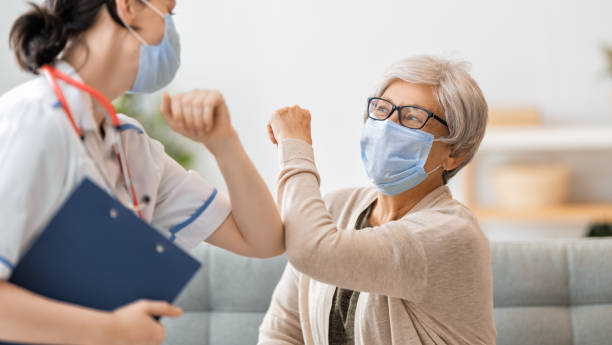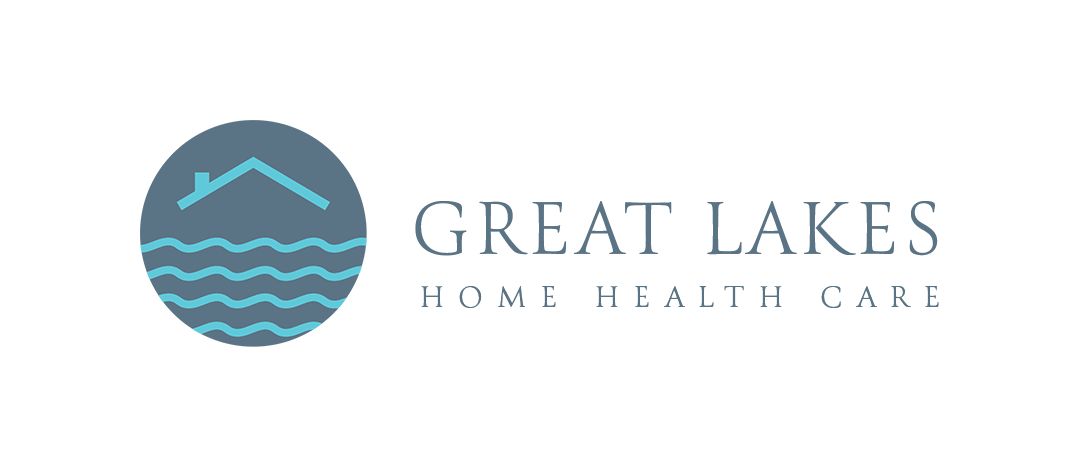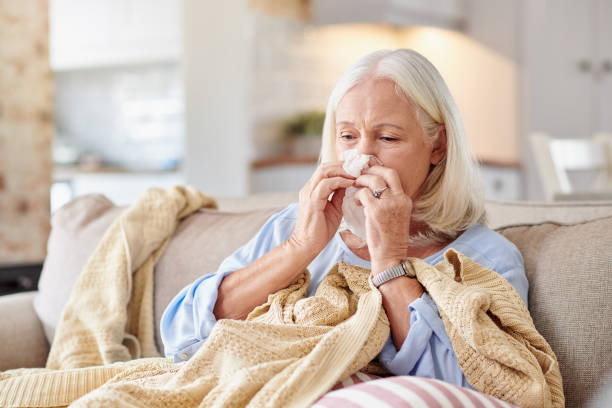As seniors age, their immune systems naturally weaken, making them more susceptible to infections. For those receiving in-home care, early detection can be the key to preventing serious complications or hospitalization. However, symptoms in older adults often present differently than in younger individuals. Family members and caregivers must be vigilant in recognizing these subtle signs to ensure timely medical attention.
Contents
- 1 Why Seniors Are at Higher Risk
- 2 Common Types of Infections in Seniors
- 3 Behavioral and Mental Changes: A Critical Indicator
- 4 Physical Symptoms That Shouldn’t Be Ignored
- 5 Monitoring Vital Signs at Home
- 6 The Role of Caregivers in Early Detection
- 7 Preventing Infections Before They Start
- 8 When to Seek Medical Help
- 9 Conclusion
Why Seniors Are at Higher Risk
Aging affects every system in the body, including the immune response. Seniors often have underlying chronic conditions such as diabetes, heart disease, or COPD that further compromise their ability to fight infections. Medications can also mask or alter symptoms, making infections harder to identify.
Moreover, seniors may not communicate discomfort as clearly as younger individuals. Some may downplay symptoms or attribute them to aging. In cases involving cognitive decline, seniors might not express pain or illness at all. These factors make it essential for caregivers to know what to look for.
Common Types of Infections in Seniors
Understanding the most prevalent infections can help caregivers stay alert to the right symptoms. Among the most common are:
- Urinary Tract Infections (UTIs): These are particularly frequent in seniors and often present without classic symptoms like burning during urination. Confusion, agitation, or frequent falls may be the first indication.
- Pneumonia and Respiratory Infections: Symptoms may include increased fatigue, shortness of breath, and a sudden drop in energy.
- Skin Infections and Wounds: Bedsores or minor skin tears can become infected quickly. Redness, swelling, or warmth around a wound should be taken seriously.
- Gastrointestinal Infections: Look for unexplained nausea, vomiting, or changes in bowel habits.
Behavioral and Mental Changes: A Critical Indicator

One of the most overlooked but telling signs of infection in seniors is a sudden change in mental status. This can include confusion, forgetfulness, increased agitation, or even hallucinations. These changes, often mistaken for progression of dementia or general aging, may signal an underlying infection.
Delirium, in particular, is a red flag. If a usually coherent senior becomes disoriented, drowsy, or uncharacteristically emotional, caregivers should seek medical evaluation immediately. Early intervention can reverse delirium and treat the underlying infection before it escalates.
Physical Symptoms That Shouldn’t Be Ignored
Physical signs of infection can vary widely, but the following should always prompt further investigation:
- Fever or chills: Even a mild fever in a senior can indicate a significant infection.
- Sudden fatigue: A marked drop in energy levels may be more than just tiredness.
- Pain or discomfort: Especially in the abdomen, chest, or joints—common sites of infection.
- Loss of appetite or difficulty eating: Changes in eating habits may be the body’s way of reacting to illness.
- Changes in urination: Frequency, color, or odor changes can point to urinary tract issues.
Even subtle signs such as increased sweating, clammy skin, or an uncharacteristic complaint like “feeling off” can be a cue that something is wrong.
Monitoring Vital Signs at Home
In-home caregivers can benefit from basic tools to monitor seniors’ health more closely. A thermometer, blood pressure monitor, and pulse oximeter can provide vital data. For example, oxygen saturation below 92% may indicate a respiratory issue, while a temperature above 37.8°C (100°F) warrants attention.
Documenting these readings over time can help detect trends or changes that might signal the onset of an infection.
The Role of Caregivers in Early Detection
Caregivers—whether family members or hired professionals—play a central role in spotting infection early. Building a daily routine that includes checking for changes in behavior, appetite, mobility, and mood creates a baseline that makes abnormalities easier to identify.
In-home caregivers should also stay in close communication with healthcare providers. If a change is observed, even if it seems minor, it’s better to err on the side of caution. Seniors decline more rapidly than younger people once an infection takes hold, so timely medical input is crucial.
Preventing Infections Before They Start
While early detection is important, prevention remains the best approach. Encourage seniors to follow good hygiene practices, such as handwashing and dental care. Keep vaccinations up to date, including flu, COVID-19, and pneumonia shots. Ensure wounds are cleaned and monitored, and work with healthcare professionals to manage chronic illnesses effectively.
Good nutrition, adequate hydration, and regular physical activity also strengthen the immune system, making infections less likely.
When to Seek Medical Help
If you notice any combination of the following, seek medical assistance promptly:
- A sudden or unexplained change in mental status
- Persistent fever or chills
- Signs of dehydration or low blood pressure
- Difficulty breathing or chest pain
- Painful urination or significantly reduced urine output
These symptoms should never be dismissed, as they may signal a serious infection requiring urgent care.
Conclusion
Recognizing early signs of infection in seniors receiving in-home care is not just about watching for the obvious. It requires attentiveness to subtle changes, a proactive approach to health monitoring, and prompt communication with healthcare providers. With these measures in place, families and caregivers can protect the health and independence of their loved ones—and possibly save lives.

